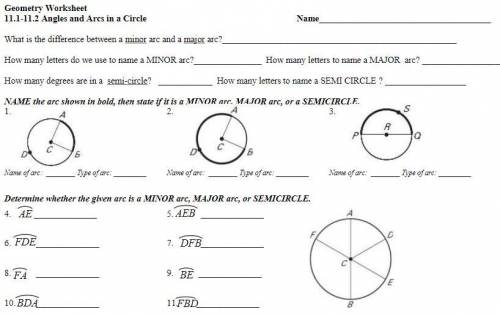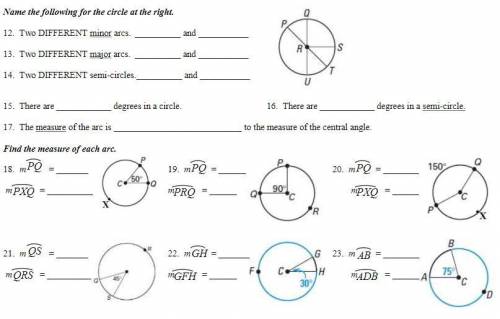In the figures attached, the complete question is shown.
What is the difference between a minor arc and a major arc?
the measure of a minor arc is less than 180°
the measure of a major arc is greater than 180°
How many letters do we use to name a MINOR arc? 2
How many letters do we use to name a MAJOR arc? 3
How many degrees are in a semi-circle? 180°
How many letters to name a SEMI CIRCLE? 3
1. Name of arc: AB Type of arc: minor
2. Name of arc: ADB Type of arc: major
3. Name of arc: PSQ Type of arc: semi-circle
4. AE: minor
5. AEB: semi-circle
6. FDE: semi-circle
7. DFB: major
8. FA: minor
9. BE: minor
10. BDA: semi-circle
11. FBD: major
12. PQ and ST
13. QPT and PUS
14. PUT and QPU
15. There are 360° degrees in a circle.
16. There are 180° degrees in a semi-circle.
17. The measure of the arc is equal to the measure of the central angle.
18. mPQ: 50°, mPXQ: 310°
19. mPQ: 90° , mPRQ: 270°
20. mPQ: 150° , mPXQ: 210°
21. mQS: 45°, mQRS: 315°
22. mGH: 30°, mGFH: 330°
23. mAB: 75°, mADB: 285°

